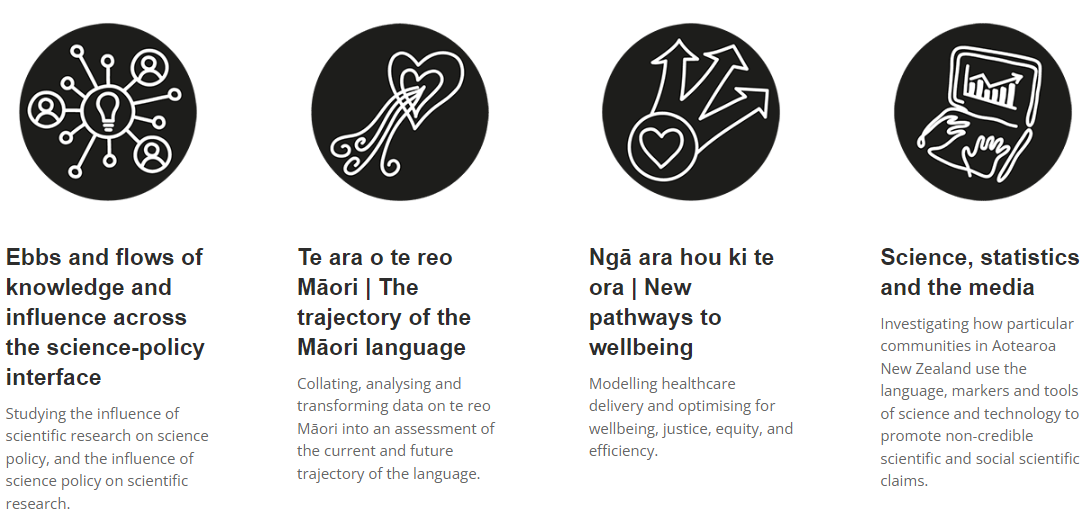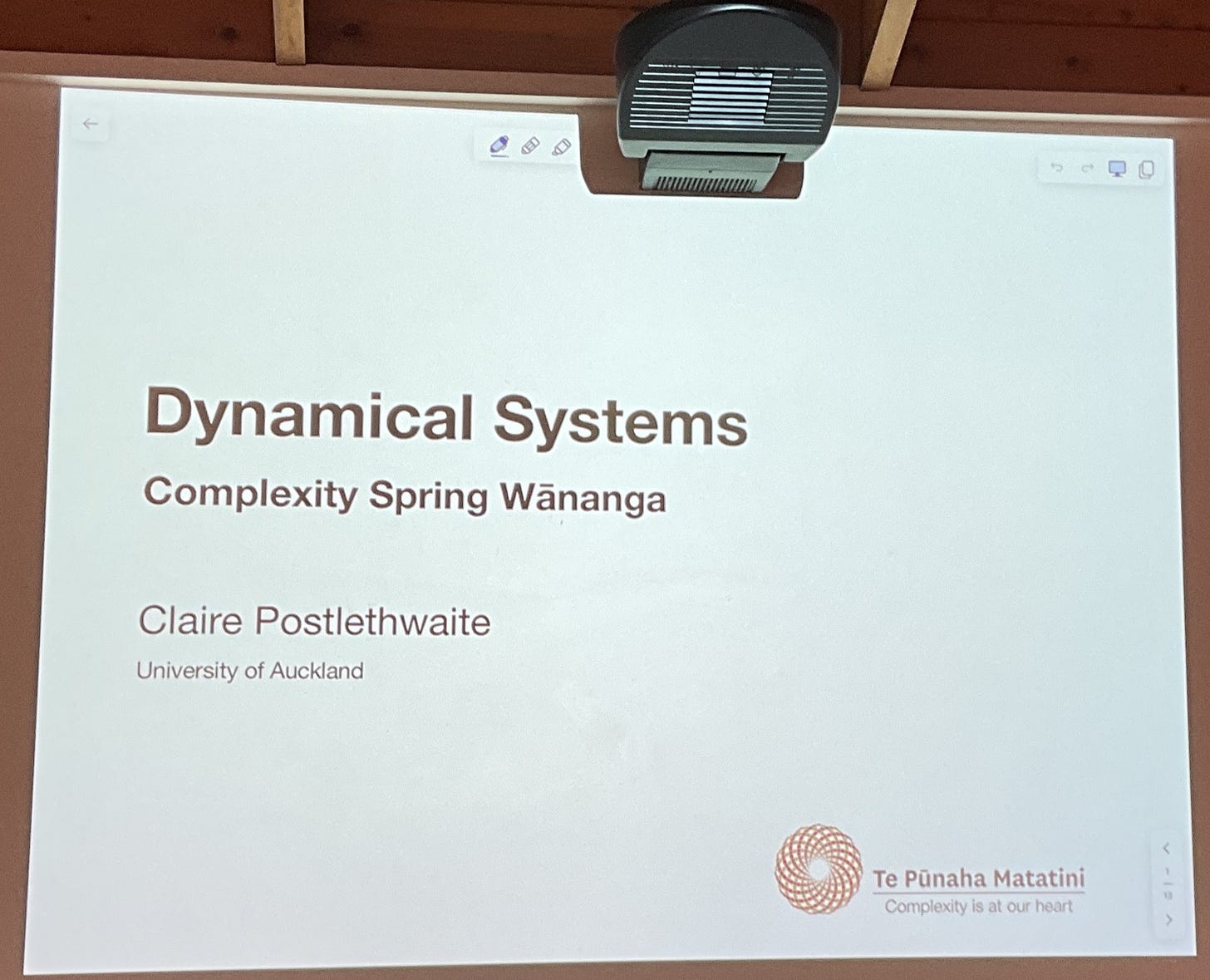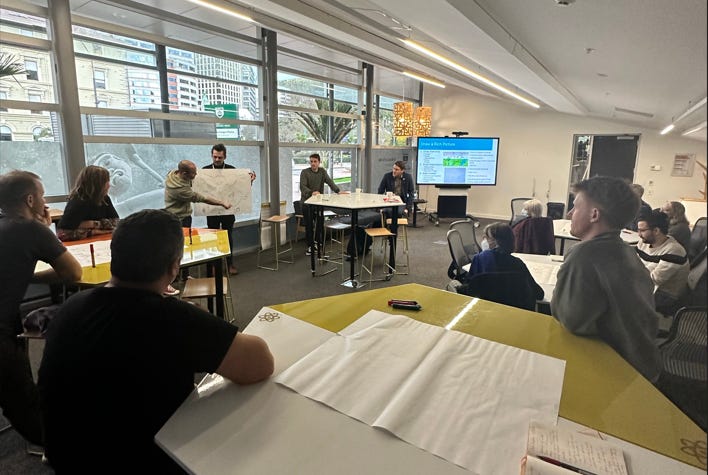From Data to Policy: Te Pūnaha Matatini’s Role in Tackling NZ’s Biggest Challenges
Have you heard of Centres of Research Excellence (CoREs)? I don't think we talk or understand them enough; they are no trivial thing.
Have you ever been invited to a party where you had no idea what was happening but just said yes, hoping it wasn’t an absolute disaster?
Yeah, that was me, walking into Te Pūnaha Matatini (TPM) for the first time. As part of my PhD adventure, I applied and, to my shock, got accepted into one of New Zealand's impressive Centres of Research Excellence. And let me tell you, it’s like stumbling into the country's coolest (and most mind-bending) research club.
Being part of the TPM whānau has been one of my most exciting and joy-filled, invigorating experiences. So, I thought I’d share a bit about what TPM is, why it’s such a big deal, and why we (yes, you and me—media, civic society, government, universities, all of us!) should be paying way more attention to CoREs like TPM.
Professor Markus Luczak-Roesch is the co-director of TPM, Professor of Informatics and the inaugural Chair in Complexity Science at Te Herenga Waka. In his words, CoREs are ‘no trivial thing’, and I agree. I’m motivated to write about them and share whatever I can so we can all engage with them and understand their benefits more.
What is Te Pūnaha Matatini?
Te Pūnaha Matatini, in short, is a Centre of Research Excellence that focuses on complex systems. The University of Auckland hosts it in partnership with Massey University, Victoria University of Wellington, University of Canterbury, Landcare Research Manaaki Whenua, and Motu Public Policy and Economics Research.
TPM tackles some of the biggest challenges—“evaluating the effectiveness of researchers’ impact on policy, to culturally safe primary healthcare delivery, the revitalisation of te reo Māori, and the impact of the distrust of science”—through the lens of complexity science.

At TPM, researchers use models, data, and innovative thinking to explore how systems—whether they be ecosystems, economies, or communities—behave and evolve. The aim is to create insights that help policymakers, scientists, and communities respond to pressing challenges in more nuanced, effective ways.

And while that all sounds pretty serious, it’s also incredibly exciting! The TPM whānau and broader team of Principal Investigators are made up of brilliant people from all walks of life who genuinely care about using their research to make the world a better place.
Below is a photo from a recent four-day research retreat I attended to learn so much about so much; it was so cool! Honestly, I can't rave more about the Complex Systems Spring Wānanga I was lucky enough to attend. We spent four days in a beautiful venue in Auckland, learning about incredible methods; it blew my mind.
The best part was how inclusive, accessible and kind these humans are. Experts in maths, physics, data, engineering, all the people that would usually intimidate the shit out of me, but not these folks! As somebody with a deep phobia of numbers and maths, they all made me feel like I belonged and could even contribute the workshops.
What Makes TPM Different?
One of the things that makes TPM stand out is that it's truly interdisciplinary and genuinely inclusive. The research isn’t just about crunching numbers or conducting experiments. It’s about combining insights from science, social science, and the humanities to tackle complex, real-world problems in ways that traditional academic silos struggle to do. They also do inclusion really well; as somebody that has seen my fair share of tokenistic and shit efforts of inclusion, this rōpū actually walks the walk. They understand the anatomy of inclusion in a way that feels very genuine and authentic.
I’ve been a part of this TPM whānau for only a few months, and what strikes me the most is how open, collaborative, and creative everyone is. They seem to constantly be playing with ideas and pushing boundaries for academic exploration and to create real-world impact. TPM is about big questions, creative solutions and bold ideas.
For example, System Dynamics and Social Systems
Take system dynamics, which is one of the critical tools used in TPM’s research. It’s a way to model how different elements of a system interact over time.
In a social context, for instance, this might mean examining how changes in housing policy affect social cohesion, which is very relevant to my own PhD research.
Rather than examining housing or social cohesion in isolation, which is largely what we are doing now, TPM’s approach would be to explore how housing policies, population growth, inequality, and even climate change might interact in unexpected ways.
How does one factor feed back into another? What are the long-term consequences we’re not thinking about? How can we intervene in ways that prevent a cascade of adverse effects down the line?
At TPM, this kind of thinking is applied to all sorts of fields, from public health to environmental sustainability and even economic resilience.
My Time with Te Pūnaha Matatini: What Blew My Mind
Being part of TPM has shifted my thinking in more ways than I can count in a very short period of time. I’ve been exposed to ideas and research methods that are transforming how I approach my PhD work on housing policy and social cohesion.
For example, I used to think of housing policy as a fairly straightforward issue—building more houses, making them affordable, and solving problems, right? However, during my time with TPM and after six months of trying to map the housing policy landscape with low success rates, I realized it’s far more complex. Housing policy is intertwined with economic inequality, immigration, climate change, and even health outcomes, or ist it? But even just being able to ask these questions, has been massive for an early career researcher.
Through TPM, I’ve learned how to start learning more about system dynamics models so I can maybe one day explore these complex interactions. This has changed the way I think about solutions to housing problems and social cohesion in New Zealand. It’s also opened my eyes to the need for collaborative, interdisciplinary research because no single field can tackle these issues alone.
The Big Picture: Complexity Research for Real-World Impact
TPM’s mission is about impact in New Zealand and globally. They’re pushing the boundaries of what we can achieve with data, models, and innovative thinking. It’s no exaggeration to say that their work could change how we approach everything from urban planning to public health.
TPM is also special due to its focus on building mission-critical capability in New Zealand. It’s not just about producing academic papers—it’s about creating tools, models, and frameworks that other researchers, policymakers, and communities can use to solve real problems. It’s about ensuring that complex systems research benefits society in tangible ways.
So if you want to engage, check out their website, or come along to their monthly Café Complexité
Café Complexité: Where Policy Meets Complexity Science (and Coffee, of course!)
Have you ever wondered how the latest complexity science can help solve real-world policy problems? Well, wonder no more! Café Complexité is a relaxed, pre-work meet-up designed to bridge the gap between groundbreaking scientific ideas and the everyday challenges we face in society.
Once a month from 8 - 9 am, Luke and Michael, the fierce leaders of this initiative, feature a presentation from a leading mind in complexity science, introducing key concepts, innovative methodologies, or practical case studies that showcase how complexity can reshape the way we approach policy and societal issues. And we don’t stop at theory—bring your own challenges to the table! We’ll explore them together through the lens of complex systems thinking.
Café Complexité runs once a month in The Atom—Te Kahu o Te Ao innovation space, located at 33 Bunny Street, Pipitea Campus (pop into the Ground Level of Rutherford House, and you’ll find us immediately to your right). Whether you’re a government worker, a practitioner, or just interested in big ideas, this is the place to connect, converse, and be caffeinated!

The problems we face today—housing crises, social inequality, or climate change—are all interconnected. Solving them requires more than a single approach. It requires systems thinking, collaboration, and a willingness to challenge conventional wisdom.
Te Pūnaha Matatini is doing exactly that. They’re pushing the boundaries of what research can achieve, and I’m beyond grateful to be part of this incredible community. Their work is inspiring, and I’m excited to see where it leads next.
So, what’s the takeaway? Whether it’s housing policy or pandemic modelling, the future belongs to those who embrace complexity. And at TPM, that future is already taking shape.
If you want to learn more about Te Pūnaha Matatini and their fantastic work, check out their website here. Trust me—you’ll want to follow what they’re up to.
Catch ya next week!






I just read a news article saying that Maori patients without a GP were likely to get worse lung cancer. It also said that GPs could miss early symptoms of lung cancer. Those excellent CoREs you refer to should have worked out that this is GPs fault, and the solution lies with better GP service. The problem is that GPs are above criticism, because I have tried, and I suspect that CoREs researchers are too Woke to challenge their authority. Doctors operate a no-fault system, where they are never wrong, but we dont need a whole new separate healthcare system for Maori.
I’m an engineer. I think it is important to try to model things, especially complex systems. It’s difficult to get reasonable good-confidence results from models, but often just getting a better handle on the magnitudes of interactions, the sensitivities, can give much better insights than casual mental models. I think humans who specialise in an area will beat computer models in that area hands down. But failing herds of quality experts, models come a good second.
That said, they are tricky beasts. Most of them are actually rubbish, even at the level of providing insight. I’ve participated in enough over the years to know that making sense of them is about as easy as reading goose entrails, and that is even assuming they capture any real dynamics. I’m thinking of the impact of Jay Forrester’s models at MIT in the ‘70s that underpinned The Limits to Growth. It was impactful, but twaddle. They told us that a finite resource facing exponential demand will have a Malthusian result. Well, yes.
What you might find Natalia is that a model investigating dynamics that intersect aspects of housing and social cohesion will stimulate your thinking in unexpected ways.